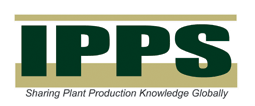|
Vol. 43
Title:
Timber Species Propagation
Author:
Hans Porada
pp: 81-85
Abstract:
INTRODUCTION
The propagation of tree species for timber production is governed by the same basic principles and objectives that govern the propagation of tree species for horticultural use. Furthermore, the same methods of propagation are also used What will vary, however, is the emphasis placed by a nursery on the number of species to be propagated. Forestry nurseries often focus on only one or two species. As timber production enterprises are usually large-scale programs over long rotations, the propagation of a timber species not only must be cost efficient, but at a scale capable of consistently producing large numbers of uniform, high quality propagules able to survive and grow under field conditions.
What, then, are the techniques used to propagate timber species? In a broad sense, they can be grouped under two headings.
- Natural (or in situ) methods from seed in the soil, seed trees, or direct seeding; and coppice
- Artificial methods, all of which require transplanting
Full text:
IPPS members
ISHS members & pay-per-view
(PDF 426611 bytes)
Translate:
   IPPS membership administration
ISHS membership administration
|



